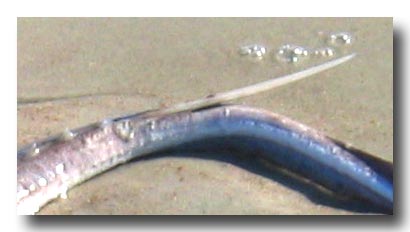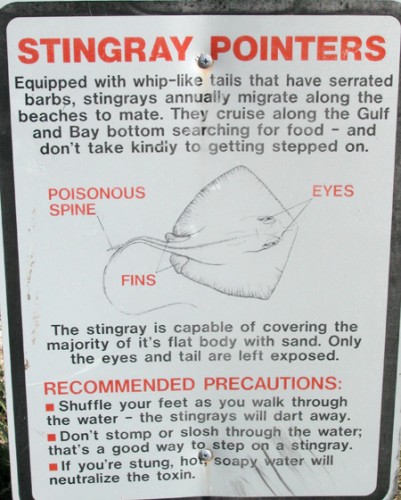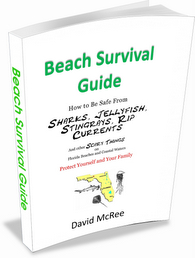Stingray season is here! May through October is the time of year when two things happen that increase injuries caused by stingrays.
- Stingrays move into shallow waters in large numbers.
- More people are in the water during the warmer months.
If you’re going into the Gulf of Mexico, the bay waters, or the Atlantic Ocean there are some basic things you need to know about stingrays.
Stingrays don’t “attack” people. They are fairly shy and mind their own business, which unfortunately includes spending a lot of time resting on the sandy bottom in areas that are popular with swimmers and fishermen. They are mostly covered with a light layer of sand and are hard to see.
Fortunately, the simple act of shuffling one’s feet while in the water will warn them of your approach and will send them scurrying away, though often they don’t go far. Sometimes they’ll circle around behind you. So don’t think that by shuffling your feet you’ve cleared a safe return path. An area with lots of stingrays is sort of like a mine field, only the mines move around. That’s a gross exaggeration of the danger, but I just wanted to give you the visual. Here’s another visual:
Truthfully, stepping on a stingray is pretty rare for the average swimmer. But, in case you get stuck, a recent article in the Dunedin Patch by Cherlene Willis and Katie Dolac does a great job of summarizing the treatment of a stingray injury. I highly recommend that you read the article, just to kick off your summer season. Here are some tips from the article, plus a few tips I’ve gathered over the years:
- Stingray barbs have venom. Some people MAY have a strong reaction to the venom and need emergency medical treatment. Look for signs of severe swelling, shortness of breath, lightheadedness, loss of consciousness or other severe symptoms. Call 911 for severe symptoms. The venom can cause a sudden drop in blood pressure.
- If you are stuck by a ray, get out of the water right away.
- Apply heat to the wound as quickly as possible. NEVER put ice on a stingray wound. Submerge the injury in water that is as hot as the person can safely tolerate for up to three hours. Heat is your friend when it comes to stingray injuries. If you’re in the water regularly, it might be a good idea to have a portable kit like the one offered by Ocean Care Solutions designed to provide first-aid treatment for a stingray injury. It contains a very convenient chemical heat pack you can use right away, among other conveniences.
- If the wound is spurting blood, apply strong direct pressure and call 911.
- Any stingray wound to a body part other than hands, arm, feet and legs should be treated as an emergency if it is a deep and penetrating wound.
Stingrays use their tail barb to defend themselves. When you step on a stingray, its automatic reflex is to whip its tail and stab you in the foot, ankle or leg, depending on the size of the ray and how you step on it. If you are fishing and catch a stingray, NEVER put your foot on the ray to attempt to unhook it; it will stab you. Guaranteed.
If you spend a lot of time in or around the marine environment in Florida, you should consider carrying a stingray injury first-aid kit like the one below from Ocean Care Solutions. It has everything you need, including a chemical heat pack, to get started treating your injury right away.
Below is a very short video of a stingray I found swimming in Charlotte Harbor. I was standing on the dock across from Captain Con’s restaurant while filiming:
Below is a video of some Cow-nose rays on Sanibel Island, shot by Pam Rambo of the ILoveShelling.com blog. These are not stingrays and do not pose the same danger because they don’t rest on the bottom and cover themselves with sand, so they are not likely to be stepped on. They do have a barb on their tail, but it is closer to their body, making it a little less dangerous, perhaps.







